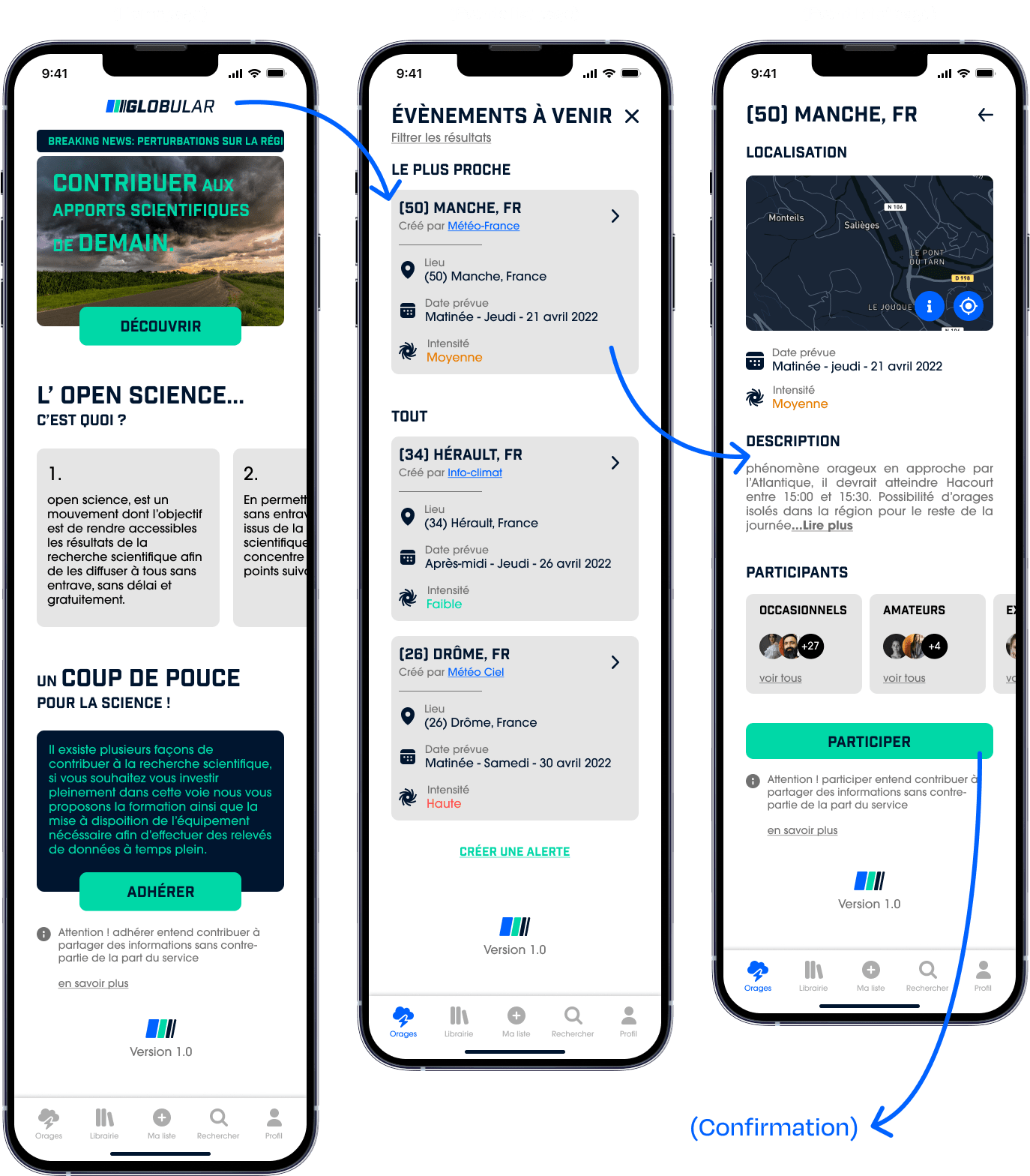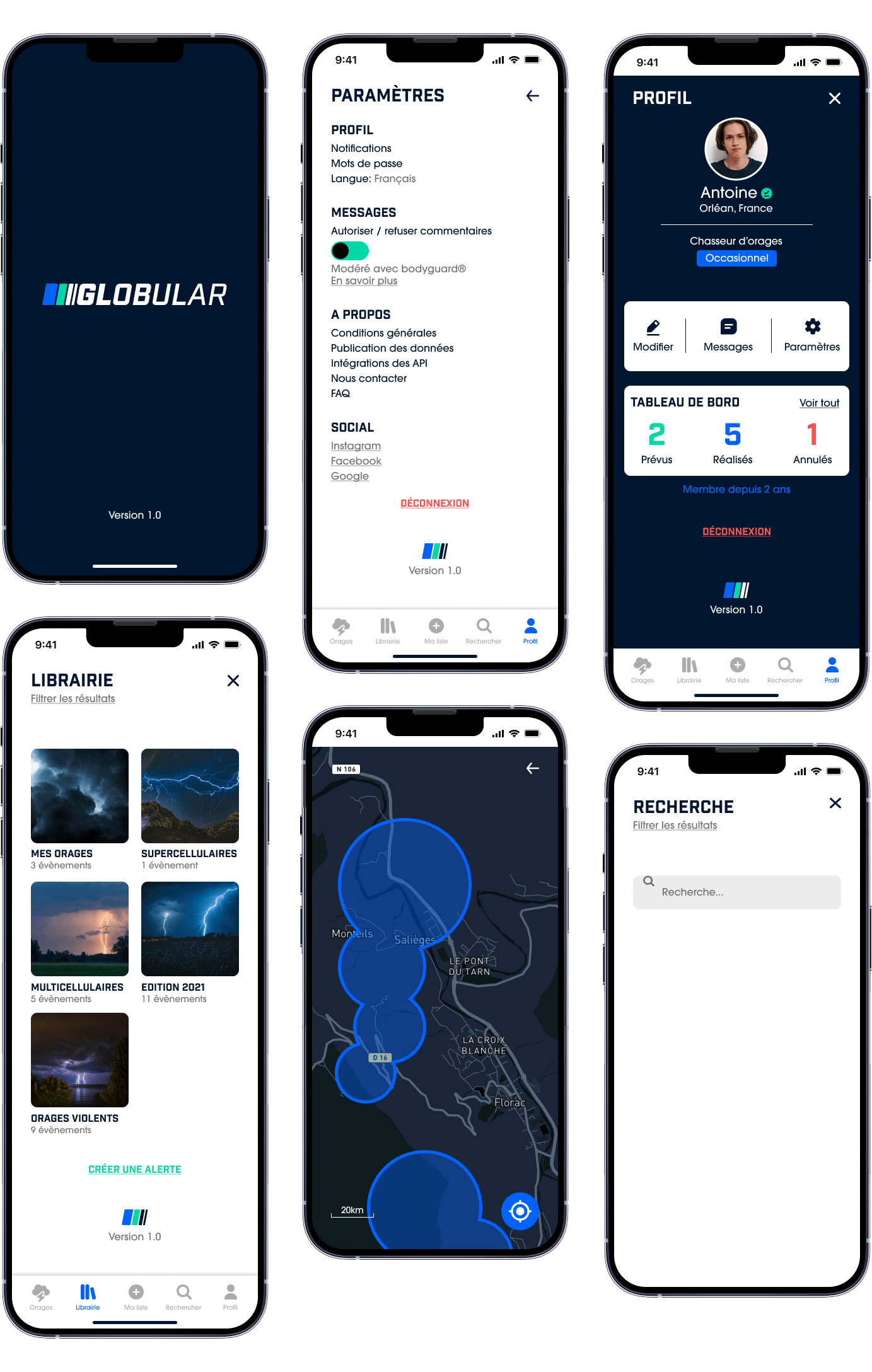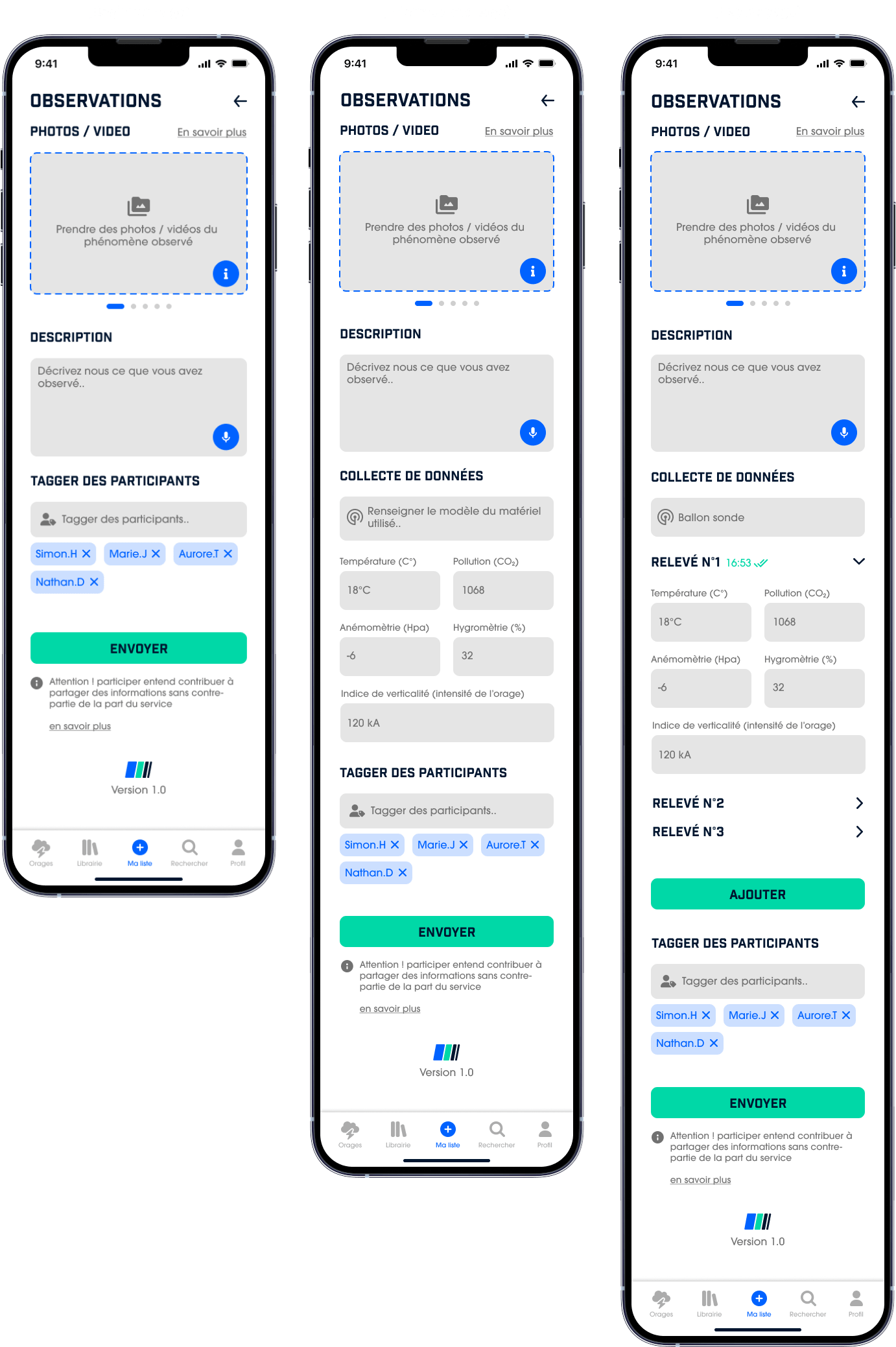
OVERVIEW
Globular is a project that revolves around the realm of storm chasers and the scientific community, united by the principle of open science.
Its primary aim is to gather data from storm chasers during their field observations of storms, lightning, tornadoes, etc.. and transmit this data to scientists.
Subsequently, the scientific community will analyze these data to enhance their understanding of meteorological science.
Ultimately, the long-term goal is to develop the capability to predict storms, mitigate potential hazards associated with them, and foster collaboration among various stakeholders.
CONTEXT
This project stems from my ESP project undertaken in my final year of school. Its aim is to provide me with extensive experience in exploring a selected topic using the design thinking methodology. It also offers the chance to engage with a highly practical subject, involving real-world needs, conducting interviews, and conducting experiments to address them.

PROBLEM
I started by pondering the questions "How can the storm-chasing activity be enhanced?" and "What are the needs of individuals engaged in this pursuit?" following research and interviews. Through this exploration, I discovered that the efficiency and collaboration within storm chasing were superior in the U.S. compared to Europe. Going deeper into this discrepancy, I found a first reason: the close collaboration between storm chasers and scientists, fostering a robust community and facilitating extensive cooperation.

PROCESS
I started my journey by delving into research and exploration to gain mastery over my subject and comprehend its workings. Subsequently, I established a network of experts to assist me in my researches, aiming to surround myself with specialists and give credibility to my project. Collaborating with them involved conducting interviews to get insights and tap into their experience in the field. Through these interviews and surveys, I compiled a comprehensive database of information and experiences, distilling general ideas and identifying common opinions.
Throughout my research and interactions with my network, I encountered various obstacles, prompting me to adapt my approach to address them. These obstacles often belonged to sociological factors or identified weaknesses that could potentially derail the service from its initial objectives.
Having conceptualized my solution, I proceeded to create prototypes of my idea and map out the potential user flow of the service, outlining all the necessary steps to gather data and achieve our goals. Subsequently, I tested the concept with my primary users, gathering their feedback to refine the product into a more user-friendly iteration.

Following this iterative process, I developed wireframes and conducted further testing, incorporating improvements to enhance the concept. Then, I delved into creating the UI design, culminating in the realization of the final product encompassing both UX and UI elements, along with a functional prototype.

THE APP
The app is structured into distinct stages of usage:
Prior to the chase: Users must select and plan their chase from a list of options based on their location, the anticipated arrival time of the storm, and its intensity.

During the chase: Depending on the selected pursuit, users are required to input data into the app and capture media such as photos, videos, or measurements.
Once completed, their observations are transmitted to the event host.
After the chase: Following the conclusion of the chase, users receive a report detailing the outcomes and insights gleaned from the data gathered by the community.

Additional features: Users can review past chases, whether they participated or not. Access is provided to a database containing historical data and information. Users can take on a more significant role in the project by subscribing to a status that entails greater responsibilities and training regarding data collection.

USE CASES
To streamline the processing of collected data, I've categorized users into three types:
NOVICES: Those without prior experience or specialized equipment.
INTERMEDIATES: More experienced enthusiasts equipped with personal devices.
EXPERTS: Storm chasing enthusiasts committed to dedicating time, who are offered necessary equipment and training.

GRAPHIC CHART
The name "Globular" draws inspiration from the enigmatic globular light phenomenon often witnessed during storms and lightning.
These unexplained occurrences manifest as energy balls resembling basketballs, moving through space.
Regarding the logo, rather than opting for a literal symbol, I've chosen to explore a more abstract representation.
The design captures the essence of movement and velocity, reflecting the dynamic nature of the phenomenon.

FUTURES UPDATES
This is merely a preliminary concept, but there's ample room to enhance the service and design it for various purposes such as monitoring storms, oceans, mountains, and more.
Areas for enhancement include:
- Enhancing the feedback mechanism to offer a broader range of options.
- Providing a visualization of others' contributions (without transitioning into a social media platform)
- Establishing a geographical scope for user activities.
- Incorporating a data collection mode for different phenomena like tornadoes, floods, etc.
- Expanding the methods of data collection to accommodate specific requirements, allowing users to customize their own templates.

CONCLUSION
This experience enabled me to undertake a project both in its continuity and from scratch, thereby reinforcing and solidifying certain concepts and knowledge while also challenging me in other aspects of the designer's process. Furthermore, by selecting a less explored topic, I was able to expand the realm of possibilities and develop a broad perspective on innovations and improvements. Engaging with experts and enthusiasts throughout the project provided invaluable guidance. Their advice and opinions helped me in my work and conforted me in the relevance of my concept.